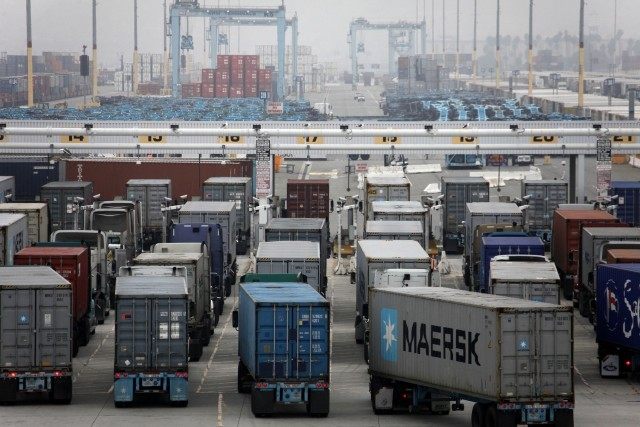There has been lots of hubbub in the last two weeks about California’s economy drying up and blowing away like sagebrush after four years of drought. But the nonpartisan Legislative Analyst’s Office (LAO), which provides budget advice to state lawmakers, announced this week that “we currently do not expect the drought to have a significant effect on statewide economic activity or state government revenues.” The reason: agriculture is only a small piece of the economy.
The LAO report acknowledges that the drought remains a “risk factor” that could have an impact later. However, the current effects on agriculture have not damaged the state’s economy as a whole, nor have residential water restrictions.
This economic “good news” from Sacramento is not to say that pain will not be inflicted on certain sectors or individuals in California. Ski resorts, recreational boating sites, and golf courses are going to be hurt by the drought. In response to Governor Jerry Brown’s executive order to curtail water use this month, regulators are preparing new restrictions on watering large commercial landscapes, such as golf courses, as well as a prohibition on sprinklers at new homes without water-efficient drip irrigation.
The biggest economic impact of the drought has been felt by rural agricultural communities. The relentless dry spell has already forced farmers to fallow 400,000 acres and driven 17,000 farmhands out of work, according to state officials.
With California’s farmers selling almost $50 billion worth of food in 2013, the state made more money off agriculture than any other state in the nation. To accomplish this feat, agriculture consumed about 80 percent of California water usage (once the portion of water that washes out to sea is dropped from the calculation).
Still, the agricultural sector represents only 2.5 percent of the $2 trillion California economy as a whole, and less than 4 percent of Californians work directly on farms and ranches.
Politically, the sector garners a tremendous amount of support from rural communities and California voters have been very empathetic to the plight of agricultural communities.
That explains why California Governor Jerry Brown took the unprecedented step of sparing rural communities by issuing an executive order earlier this month that forced urban water agencies to reduce their water use by 25 percent to save an estimated 1.5 million acre-feet, or nearly 500 billion gallons of water, over the next year. Brown’s order exempted most of the state’s farmers (though some complain that they were not included).
Tax collections do not seem to be suffering from the drought, with revenue $1.5 billion ahead of projections at the end of March, according to the State Controller’s monthly report. Most of the gain is due to California leading the nation with 476,400 new jobs over the last 12 months, on top of capital gains on from Silicon Valley’s hot IPO market.
Cyclical droughts and torrential rains have always been part of the California experience. Looking forward, the National Oceanic and Atmospheric Administration (NOAA) on April 9 officially declared a strong El Niño advisory, reflecting substantially above-average surface sea temperatures forming across a huge swath of the equatorial Pacific.
That means that there is a 60 to 70 percent probability that America could experience a monster winter like the El Niño that hit in 1997-1998, causing drenching rains in the Southeast, ice storms in the Northeast, tornadoes in Florida, and mass flooding in California.

COMMENTS
Please let us know if you're having issues with commenting.